Malvern AGS Show, 2011
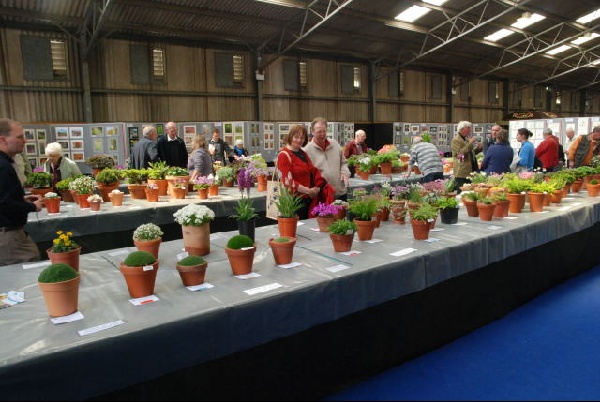
To call the weather this year ‘odd’ would be an understatement. The ‘proper’ winter we endured made the early flowering plants late and the short summer we enjoyed during April induced later flowering plants to perform earlier than usual. Nevertheless some of the Society’s hardiest (daftest?!) exhibitors to raid their gardens and greenhouses, coming up with some superb exhibits for one of the longest days of the Show season.
New to Malvern this year was the peripatetic Artistic Competition, on display for the entire weekend. Those of you who have seen what the artistically-inclined members of the Society are capable of know how remarkable the photos, embroidery and artwork can be. Jean Morris’ embroidery is always popular and Jon Evans’ photos impressed members and the public alike.
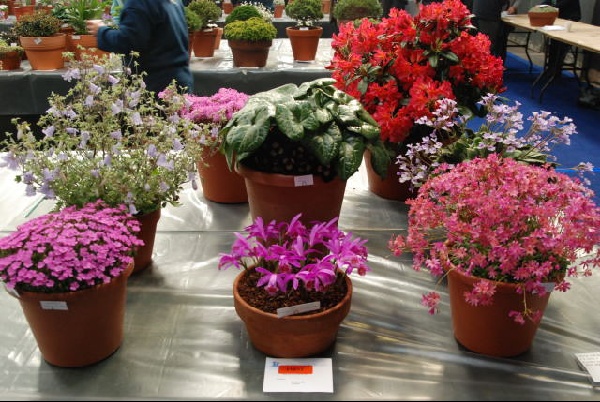 No prizes for guessing who won most points in the Open Section. Cecilia Coller once again wiped the board and took home, among other awards, two well-deserved
No prizes for guessing who won most points in the Open Section. Cecilia Coller once again wiped the board and took home, among other awards, two well-deserved
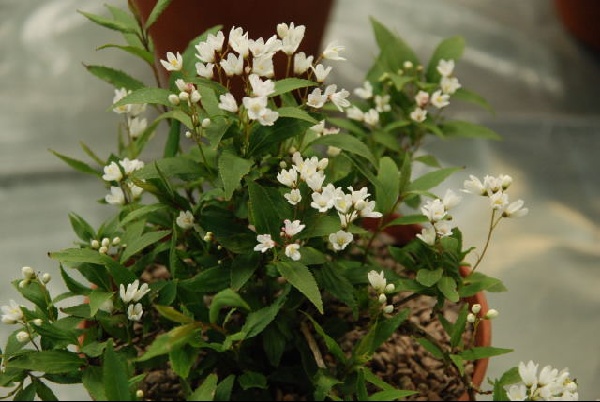
The winner of the Lingen Trophy for most points in the Intermediate Section will come as no surprise either. Deutzia crenata var nakiana ‘
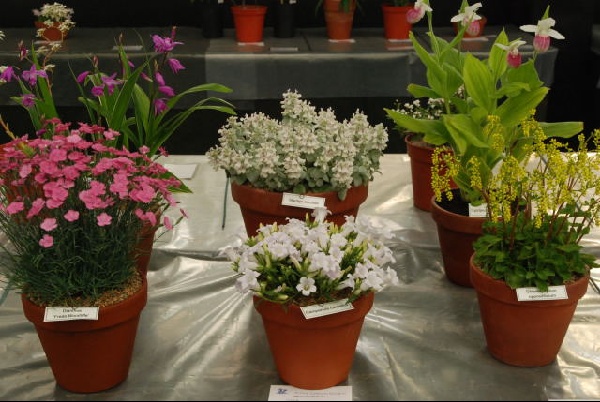
Anne Vale is another very successful exhibitor in the Intermediate Section and her exhibits did were well received at Malvern. A six-pan received a huge amount of praise and would have done equally well in the Open Section. Stachys candida and an extremely floriferous Campanula carpatha were two of the plants in this entry, the former receiving a Certificate of Merit.
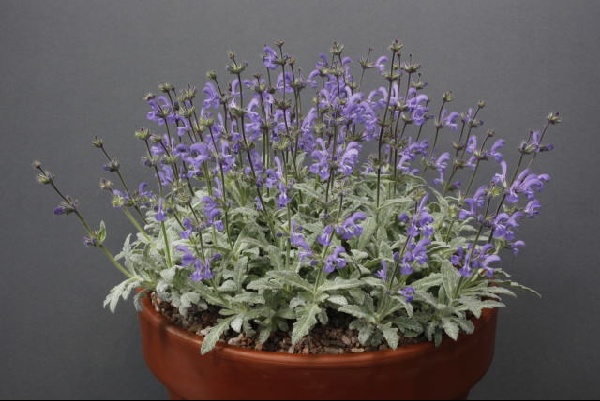
It was a good day all round for the Lamiaceae family: David Richards’ Salvia cyanescens was also awarded a Certificate of Merit; to 60cm tall in its Turkish haunts, on steep shale slopes, but dwarfer when pot-grown, with lilac flowers above flattish, felted rosettes, it was an off-kilter exhibit seldom seen.
Dwarf shrubs and subshrubs were among the highlights of the Show of which Dave Mountfort had a superb Rhododendron kiusianum, which he had grown from seed and keeps in the open garden.
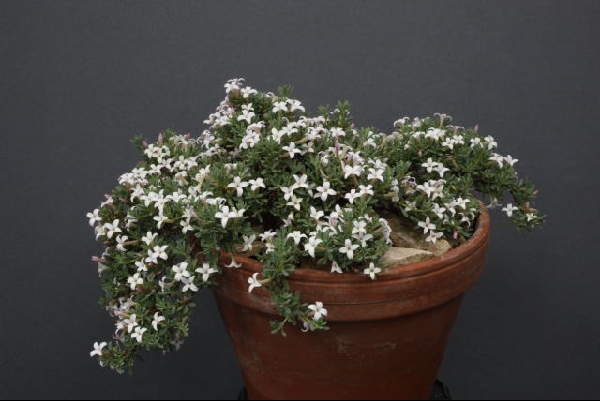
The award for the best plant in a 19cm pot went to that scarcely-scented but otherwise top of class southern Greek through to Crete and northern African Daphne jasminea, shown by David Charlton. This was along the lines of the so-called ‘
As another exhibitor, Martin Sheader, observed, if woodland plants qualify as alpines, then why shouldn’t cacti? Martin and Anna’s three pan of Rebutia minuscula, R. fabrisii and Gymnocalcyium bruchii proved that this family of plants is more than worthy for the show benches. If nothing else, their spine-aplenty armoury will save money on ‘Please do not touch the exhibits’ signs!
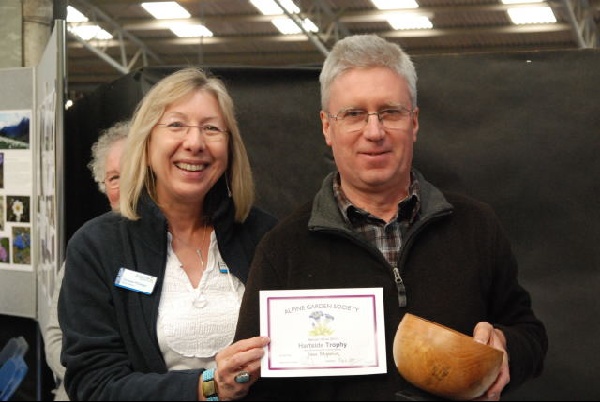
The Novice Section has made a most welcome comeback recently and I am pleased to report that this trend continued at Malvern. The new editor of ‘The Alpine Gardener’, John Fitzpatrick, was very successful and received a red sticker for every one of his entries. These included the bright yellow-green conifer Chamaecyparis obtusa ‘Nana Lutea’ and Rhodohypoxis baurii, which he exhibited in the Intermediate Section. Unsurprisingly John received the Hartside Trophy for most points in the Novice Section (shown being presented by Christine McGregor).
Julie Parrott was another successful exhibitor in the Novice Section. Her three firsts mean that she will be collecting a Bronze Medal at this year’s Annual General Meeting.
An entertaining highlight of the Show was Jo (ably assisted by her glamorous assistant Brian)
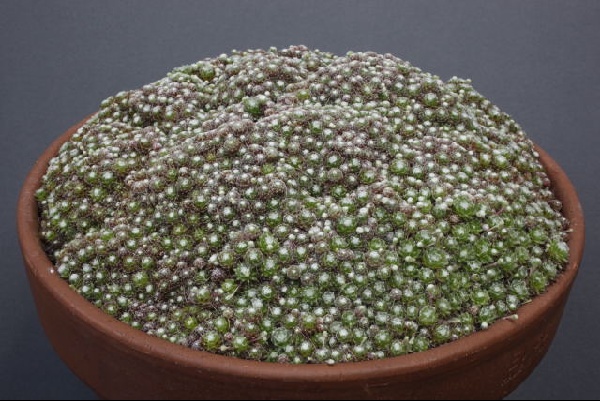
Sempervivum arachnoideum, shown by Rob Price, was the recipient of a third Certificate of Merit. These plants are not particularly difficult to grow, and easy to get hold of, but rarely have the judges ‘oohing’ and ‘aahing’ and they can be a pain when three-quarters of the rosettes in a 36cm pan decide to flower at the same time, but no alpine grower should be without one.
The real winner of the day was the Society itself. Not only did we attract a huge amount of interest, but a large number of new members as well. Special thanks should go to Christine and Jim McGregor and all of the volunteers who manned the publicity and books stands over the four days. It is the plants that attract the public, but it is these people who sign them up.
